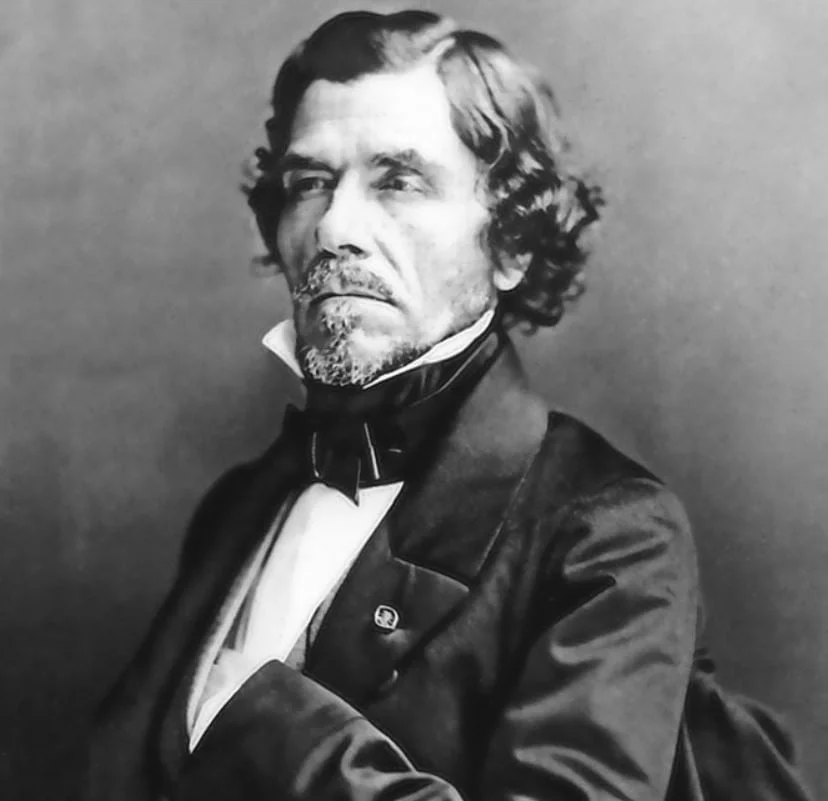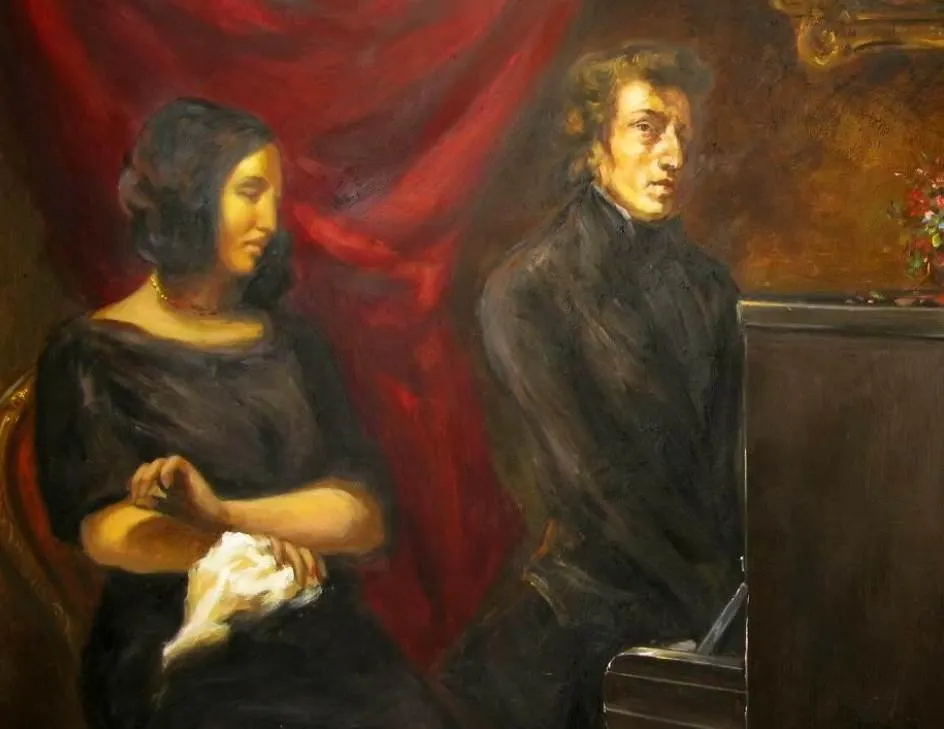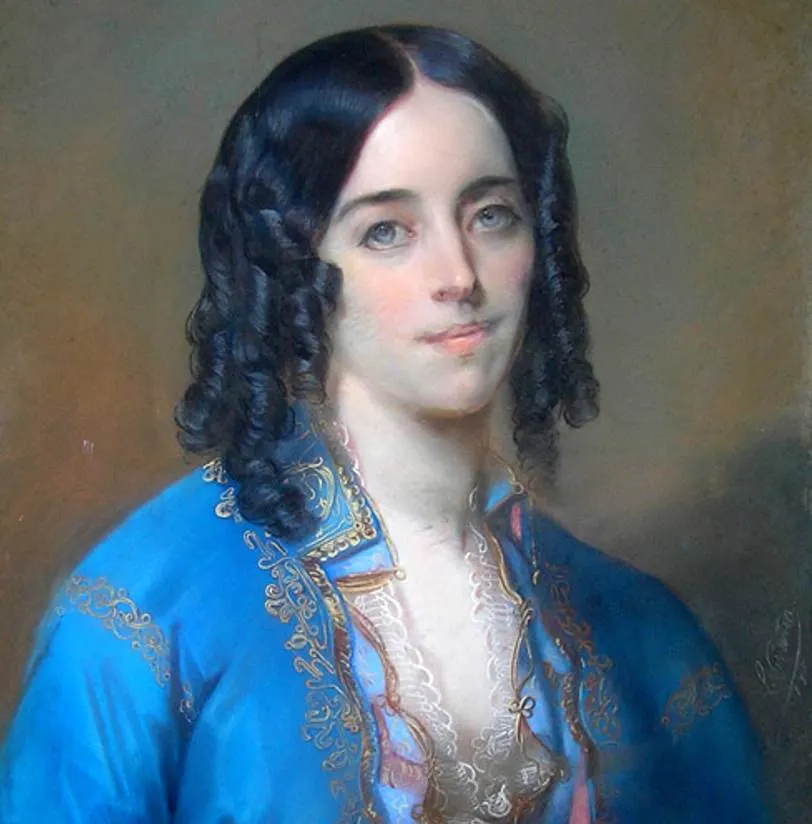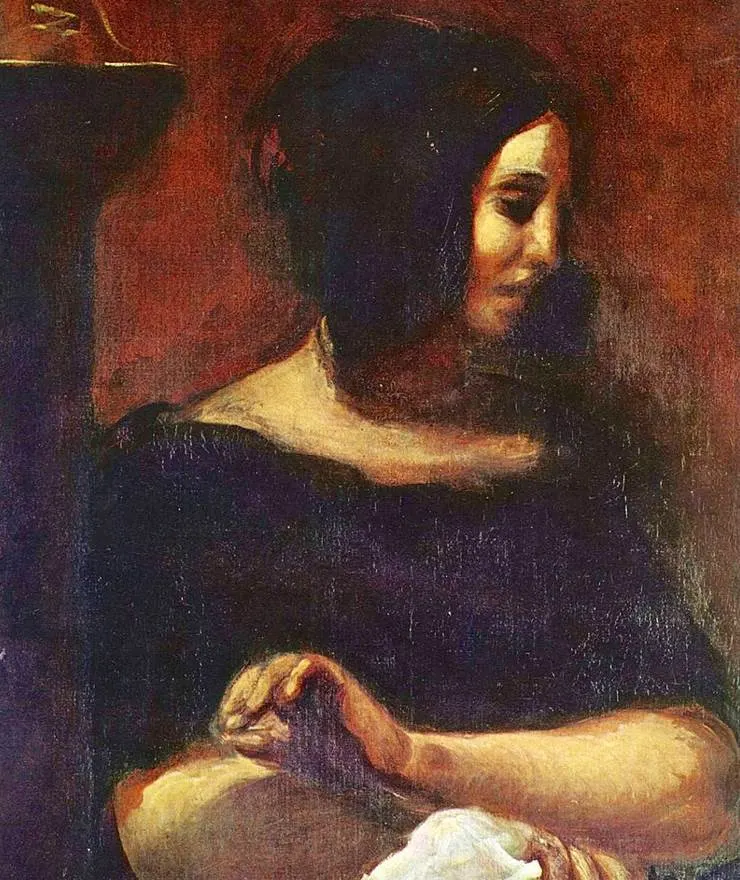The leading Romantic artist in France in the 19th century was Eugène Delacroix (1798-1863).
The French artist became famous for producing monumental artworks, including “Liberty Leading the People” (1830), arguably the most iconic French painting ever produced.
An intriguing painting in his oeuvre was a portrait of two of his close friends who were both famous artists in their area.
Let’s take a closer look at some of the most interesting facts about the Portrait of Frédéric Chopin and George Sand by Eugène Delacroix, artworks (yes, that’s plural) with a remarkable history.
1. The painting was never completed in the late 1830s
The Portrait of Frédéric Chopin and George Sand is a fascinating work of art by the French master of the Romantic era Eugène Delacroix.
He worked on it in the late 1830s and nothing is known about the circumstances in which he painted it. We don’t know whether it was commissioned or intended to be a gift.
Delacroix was approaching his forties when he stopped working on the painting in 1838 for unknown reasons. He had been a master for nearly decades at the time.
His first major work to be accepted for the Paris Salon was “The Barque of Dante,” a monumental painting that he completed in 1822. This was followed by several paintings that were held in high regard by art critics at the time.
This didn’t always go smoothly. The transition from Neoclassical art to Romantic art was sometimes met with fierce resistance. The remarkable use of color and exaggerated drama defined his paintings.

2. The two depicted people were famous artists themselves

The painting depicts the famous Polish composer of the Romantic era Frédéric Chopin (1810-1849) to the right.
Amantine Lucile Aurore Dupin (1804-1876), a French novelist better known by her pen name “George Sand,” can be seen to the left.
Chopin became a world-famous composer and virtuoso pianist and is considered to be one of the most renowned musicians of his time.
George Sand was equally famous for her novels which were tremendously popular all across Europe during her lifetime. Today, she’s considered to be one of the leading Romantic writers of the 19th century.

3. The painting was cut up into two pieces after the artist passed away
The view of the painting above is a hypothetical image of how the painting might have looked upon completion.
Delacroix completely stopped working on it in 1838. Equally remarkable is the fact that it never left the artist’s studio for the following 25 years.
It was still in its unfinished state in his studio when he passed away in 1863. Shortly afterward, the painting was cut up so it could serve as 2 portraits.
Why did somebody cut the Portrait of Frédéric Chopin and George Sand into two pieces? Most probably because this person thought that both paintings would fetch more money than just one.

4. Sand and Chopin were lovers at the time it was painted
George Sand was an independent woman and a remarkable character in the 19th century. She didn’t shy away from wearing men’s clothes, had affairs with numerous men, and loved to smoke the pipe.
She was the one who introduced Chopin to Delacroix after meeting him for the first time in 1836. Sand and Chopin started a troubled relationship in 1838 which lasted a decade.
Their relationship was plagued by Chopin’s illness as he suffered from tuberculosis. This meant that she was more of a caregiver during the final years of their relationship.

5. Delacroix borrowed a large attribute but never included it
Although we can’t see it in the painting, Delacroix borrowed a piano and had it installed in his studio. He did so because he wanted to complete the painting inside of his studio.
He never managed to accomplish this and most strikingly, never included the piano in the unfinished painting.

6. Cutting up the work makes Sand look rather awkward for a particular reason
The portrait of Frédéric Chopin looked fairly normal after the painting was cut into two pieces. George Sand looks rather strange.
That’s because Delacroix painted her in such a way that she appears to be enjoying the music that her lover Chopin is playing while she is sewing, a hobby of hers.
Chopin’s cut only consists of his head, while Sand’s portrait was cut so narrowly that it only includes her body.

7. How big are the Portraits of Frédéric Chopin and George Sand by Delacroix?
Because the painting was cut up in such a brutal manner, we don’t know exactly how bi the double portrait of both artists was.
We do know that the oil on canvas painting of Frédéric Chopin has dimensions of 46 x 38 centimeters (18.1 x 14.9 inches).
The Portrait of George Sand is significantly larger as it has dimensions of 81 × 56 centimeters (31.8 × 22 inches).
8. Where are the paintings located today?
It would have been great if both portraits would hang next to each other, but unfortunately, that’s not the case.
Just like the relationship between Chopin and Sand, which ended 2 years before the composer passed away in 1849, the paintings got separated.
The portrait of Chopin is part of the collection of the Louvre in Paris, while the Portrait of Sand can be admired at the Ordrupgaard, a state-owned museum in Copenhagen, Denmark.

